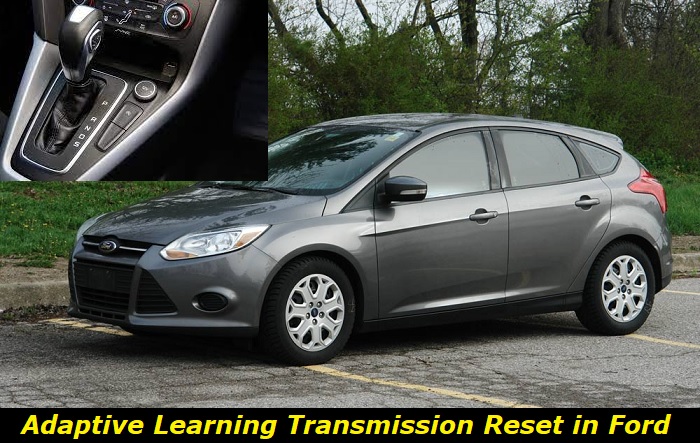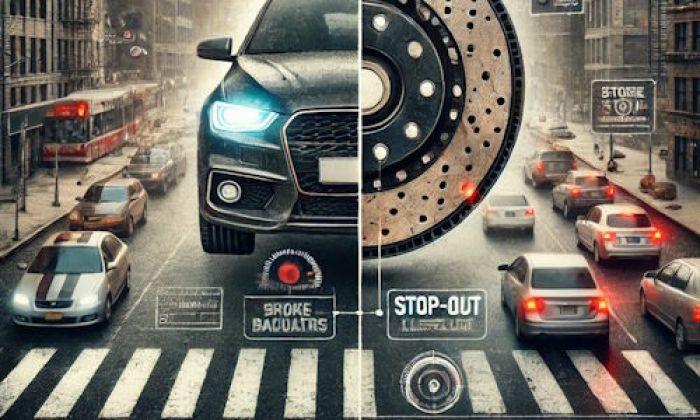Ford is one of the largest car manufacturers in the world. To remain at the top in the car-making industry, Ford Company, founded in 1903, has to continually invest in new technology. Artificial intelligence (AI) is increasingly becoming part and parcel of our everyday lives. Ford has invested in modern innovative technology, which has seen the car maker lead in many areas.
Electrical problems highlights
- Level of urgency:high
- DIY inspection:possible but complicated
- DIY repairs:impossible
- Can you drive?yes, if it starts
- Price of repairs:$300 - $650
- Ifignored:a lot of functions may not work, glitches, issues with equipment
- Ways to fix:check the wiring, battery, alternator, and the faulty equipment itself

What is Adaptive Learning Transmission
Adaptive learning transmission is a feature intended to increase the vehicle's durability. It provides a consistent shift feel over the vehicle's lifetime. A brand-new car usually has firm transmission shifts, soft shifts, or both. As a first-time car owner, this might concern you, but there is nothing to worry about as this is considered normal. It also doesn't affect the transmission of the vehicle or its durability.
As you drive your new Ford vehicle, the adaptive learning process begins and updates the transmission operation. This process involves the car adapting to the continued changes in the transmission operation. This adaptive learning starts from the day the vehicle leaves the dealership and continues through its entire life.
The adaptive learning transmission relies on a wide range of unspecified sensors in the vehicle and will help the transmission adapt or change according to changing driving conditions. There will be a continued change in transmission operation as the vehicle is driven on the upcountry roads, the highway, the city, or when it is towing. The same adaptive learning transmission technology will be applied when different drivers operate the vehicle. There are aggressive drivers, and there are smooth drivers. The transmission always adapts accordingly.
While in some quarters, it is claimed that adaptive learning transmission is designed to learn the driver's habits. Some experts will tell you that the system has nothing to do with the vehicle learning about your driving habits but adjusting itself for manufacturing tolerances. The transmission control unit/module (TCU) is learning the transmission operating behavior. Over time, the vehicle will have a character depending on how it is generally driven and the condition it has been maintained since it was new.
What is adaptive learning transmission reset?
Adaptive learning transmission reset is a process where your vehicle's transmission is reprogrammed to its default settings. When your vehicle came from the factory, the transmission was preset in a particular way so that every gear shift could or should happen in a range of given RPMs.
After driving your vehicle for miles, probably thousands of miles, you might notice the gear is lagging, or the gear shifting is not as it used to be. As explained above, your vehicle adapts according to the transmission operations it is subjected to. Remember, the vehicle continually uses adaptive learning transmission technology. Because vehicle parts age and get worn out, this technology adapts to these changes accordingly, and that is why as a driver, you cannot notice any change in the way the transmission works over the years.
Ford has provided a way to reset or unlearn your vehicle's adaptive transmission. This process is referred to as the adaptive learning drive cycle. The process is specific and has to be followed as specified.
The adaptive learning drive cycle
- Park your vehicle on a level road surface.
- Record all the diagnostic transmission codes (DTCs), then clear them.
- Start the car and drive until the transmission and the engine reach the normal operating temperature.
- Accelerate with a slight throttle of 15% from a stop. Ensure that the upshifts through the gears from the first to the eighth gear happen between 1300 and 1600 RPM.
- After the 7th upshift gear, you may need to put a little more throttle. Shifting from 7-8 should happen 32-38 mph until you hit 55 mph, then you can upshift to 9th and then 10th gear.
- Brake gently, and when the vehicle comes to a complete stop, hold your foot on the brake pedal for 5 seconds.
- Shift the gear shift to N (Neutral) and hold for 1 second.
- Shift the gear shift to R (Reverse) and hold for 2 seconds.
- Shift the gear shift to N (Neutral) again and hold for 1 second.
- Shift the gear shift to D (Drive) and hold for 2 seconds.
- Repeat steps 4 through 10 for six additional times.
It is worth noting the throttle positions of Ford vehicles:
- 0-80 MPH at 25% throttle position, then slow down to a complete stop
- 0-80 MPH at 50% throttle position, then slow down to a complete stop
- 0-80 MPH at 75% throttle position, then slow down to a complete stop
After testing the DTCs, record them. In case there are DTCs, start by repairing the non-transmission DTCs. This is necessary because these codes can directly affect the transmission operation of the vehicle. Follow up this test by going for a road test to confirm that the codes are entirely eliminated.
When should you do a Ford adaptive learning transmission reset?
According to several Ford online forums, car owners have taken their vehicles to the dealership, complaining that vehicles respond more slowly than usual. Some dealership staff will claim that the lazy response of the transmission is due to adaptive learning transmission is still learning the driver's driving habits, which will eventually adjust.
What you need to do, however, is have the car checked for DTCs to determine whether a reset of the adaptive learning system is necessary. Given how easy the process is, you can as well do it at home and have your car's transmission rejuvenated.
You can reset your vehicle's adaptive learning transmission system in the following circumstances:
- When the vehicle starts responding sluggishly, you have conducted a diagnostic test and found associated error codes.
- Removing or disconnecting the battery for some minutes. This means the transmission will have to relearn again.
Is adaptive learning transmission what they say it is?
Ford vehicles are designed and built to give the driver and passengers the best possible experience. Adaptive learning transmission technology helps the vehicle learn the driver's driving style. However, this happens in a matter of minutes and gets reset now and then.
If, for example, you happen to accelerate and brake hard, the vehicle will switch to sports mode, where downshifts are done earlier and upshift later. When you switch to a more conservative and economical style, the vehicle will upshift earlier and downshift later. The vehicle will tend to use higher gears in this mode. This technology also detects if you are hauling, which makes the transmission downshift when descending slopes.
Contrary to what some salesmen and mechanics advise Ford owners, that 'you may have taught your car bad habits'; that's not the case. This is because a brand-new car takes several hundred kilometers to smoothen out the systems. If you have driven a brand new vehicle in the 90s, you were more likely to notice the hard and the soft shifts. Nowadays, because of the ever-improving technology, this has become less noticeable by the drivers of brand-new vehicles.
The adaptive learning transmission employs a sophisticated shift algorithm that includes all the learned information. This allows the shift quality of the transmission to know when to shift and remain exceptional even as it wears over time. The learning takes place in a matter of minutes rather than months.
The transmission control module
The TCM is a critical component in making the driving experience of the driver and the passengers smooth and enjoyable. The TCM works alongside the engine and the transmission to ensure that gear shifts take place at the right time and place to make your driving experience smooth and safe.
It is vital to understand what the TCM is and what its role is to understand when you can reset the adaptive learning transmission. A faulty TCM may give the same symptoms as a vehicle that needs a reset. Here are the common symptoms of a faulty TCM that you should be aware of before conducting an adaptive learning transmission reset;
- Sluggish acceleration. An ineffective adaptive learning transmission shows similar symptoms.
- Gear slippage
- Poor fuel economy
- Inability to shift
Conclusion
The Ford vehicles are indeed advanced to a level that your car can give you the best driver or passenger experience based on the adaptive learning technology employed. There are many online forums where questions about this technology are asked. Some dealership personnel are not eager to help customers deal with some underlying issues.
When a relatively new car owner troops back to the dealership complaining about their vehicle's responsiveness and driving experience, some dealers dismiss them by saying the vehicle is in the process of learning their driving habits. To sort out this transmission issue, all the driver of a Ford vehicle should do is follow the above-described steps and reset it.
About the authors
The CarAraC research team is composed of seasoned auto mechanics and automotive industry professionals, including individuals with advanced degrees and certifications in their field. Our team members boast prestigious credentials, reflecting their extensive knowledge and skills. These qualifications include: IMI: Institute of the Motor Industry, ASE-Certified Master Automobile Technicians; Coventry University, Graduate of MA in Automotive Journalism; Politecnico di Torino, Italy, MS Automotive Engineering; Ss. Cyril and Methodius University in Skopje, Mechanical University in Skopje; TOC Automotive College; DHA Suffa University, Department of Mechanical Engineering






Add comment